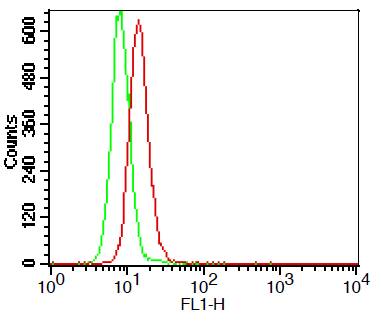Monoclonal Antibody to Human TLR4/MD-2 (Clone : 7E3)(Discontinued)
Shipping Info:
For estimated delivery dates, please contact us at [email protected]
| Format : | Purified |
| Amount : | 500 µg |
| Isotype : | Mouse IgG1 |
| Content : | 0.5 mg, 0.2 µm filtered antibody solution in PBS, containing 0.1% bovine serum albumin. |
| Storage condition : | Product should be stored at 4 °C. Under recommended storage conditions, product is stable for one year. |
The monoclonal antibody 10-3521 reacts with the Toll-like receptor 4 (TLR4, CD284)/MD-2 complex. TLRs belong to a family of proteins that specifically recognizes and senses microbial products. They are highly conserved throughout evolution and act as innate immune recognition receptors against many pathogens. TLR4 is a functional receptor for gram-negative bacterial lipopolysaccharides (LPS). TLR4 associates with MD-2 which is absolutely required for LPS-induced activation of TLR4. MD-2 exists as a cell surface protein in association with TLR4. It also exists as secreted forms consisting of MD-2 monomers and multimers (sMD-2). Circulating sMD-2 is mainly present as a doublet of ~20 and 25 kD, representing differentially glycosylated forms. Unlike TLR4, sMD-2 binds directly LPS without the need of soluble CD14 (sCD14). However, LPS-MD-2 interactions are increased when LPS is pretreated with CD14. Only monomeric sMD-2 is biologically active and able to associate with TLR4 and LPS. sMD-2 circulates in plasma of healthy individuals as a non-active, polymeric protein. In septic plasma, the total amount of sMD-2 was strongly elevated and contained both sMD-2 polymers and monomers. Soluble MD-2 is proposed to be an important mediator of organ inflammation during sepsis. During experimental human endotoxemia, the monomeric and total sMD-2 content in plasma increased with the kinetics of an acute phase protein. This parallels enhanced TLR4 costimulatory activity. In vitro studies revealed that sMD-2 release appears to be restricted to endothelial and dendritic cells. The monoclonal antibody 7E3 reacts with the TLR4/MD-2 complex and is able to inhibit the biological activity of the TLR4/MD-2 complex.
| Subcellular location: | Cell membrane |
| Post transnational modification: | N-glycosylated. Glycosylation of Asn-526 and Asn-575 seems to be necessary for the expression of TLR4 on the cell surface and the LPS-response. Likewise, mutants lacking two or more of the other N-glycosylation sites were deficient in interaction with LPS. |
| Tissue Specificity: | Highly expressed in placenta, spleen and peripheral blood leukocytes. Detected in monocytes, macrophages, dendritic cells and several types of T-cells. |
| BioGrid: | 112954. 31 interactions. |
|
There are currently no product reviews
|















.png)











